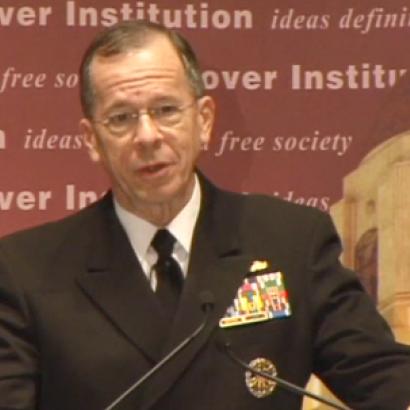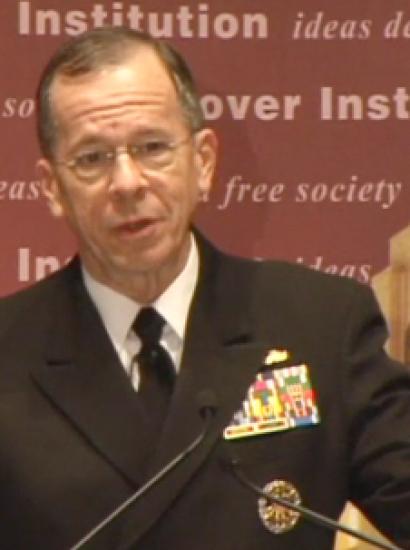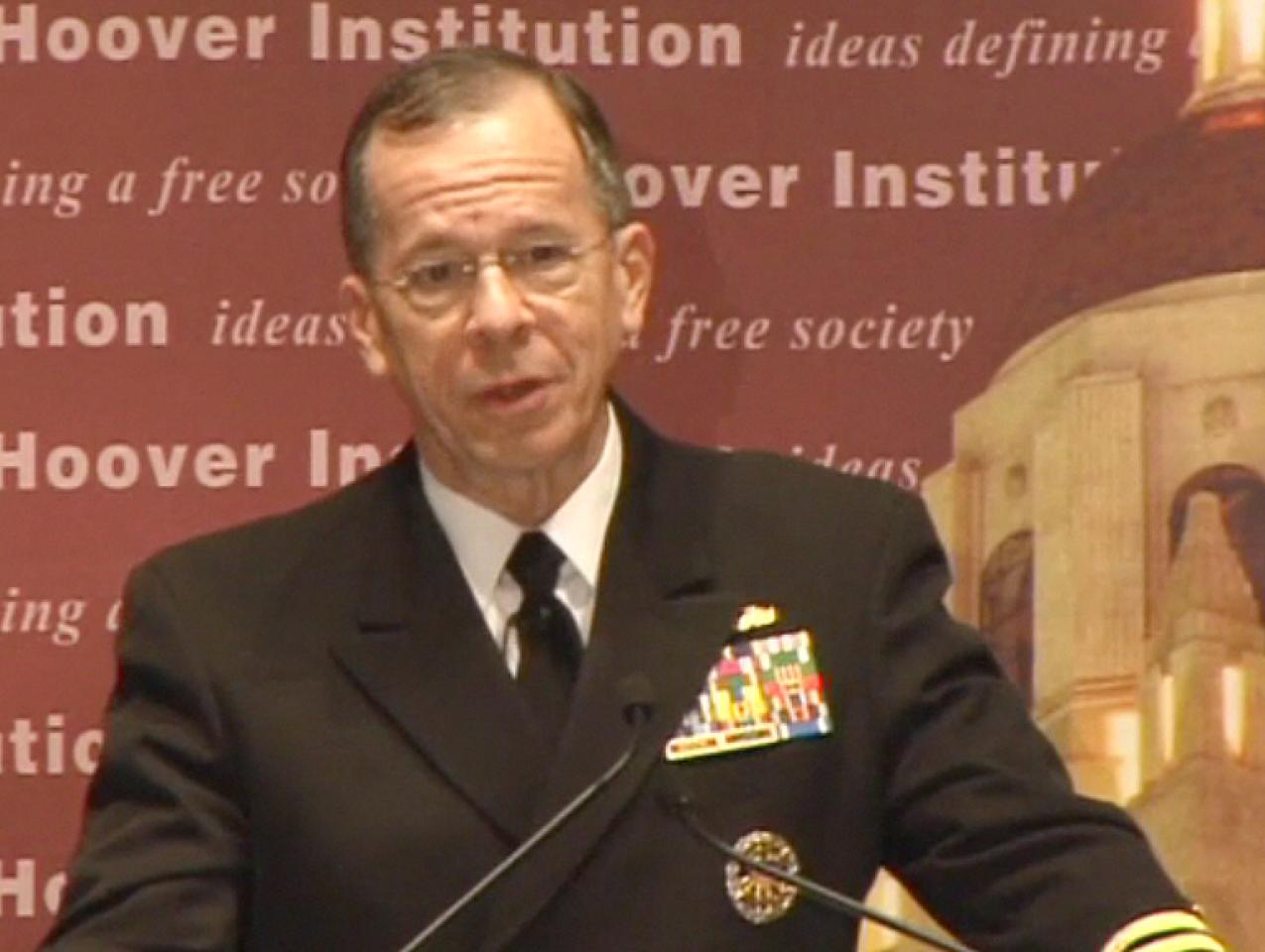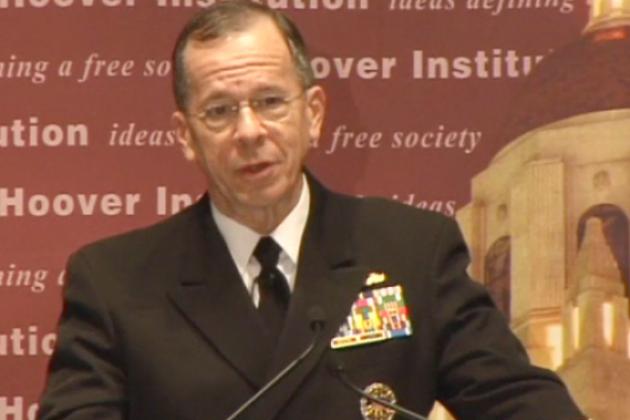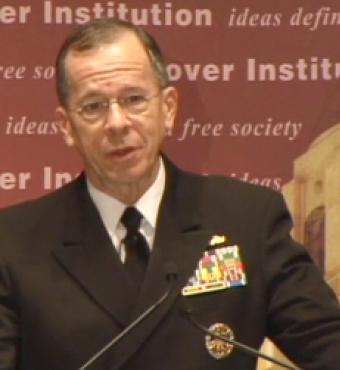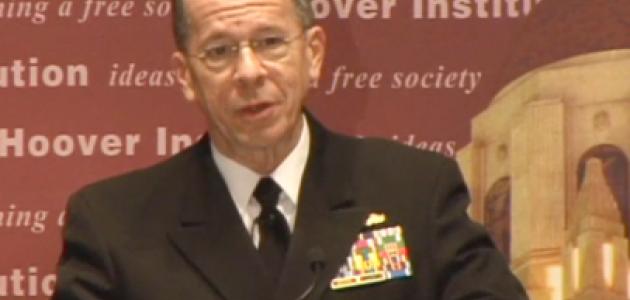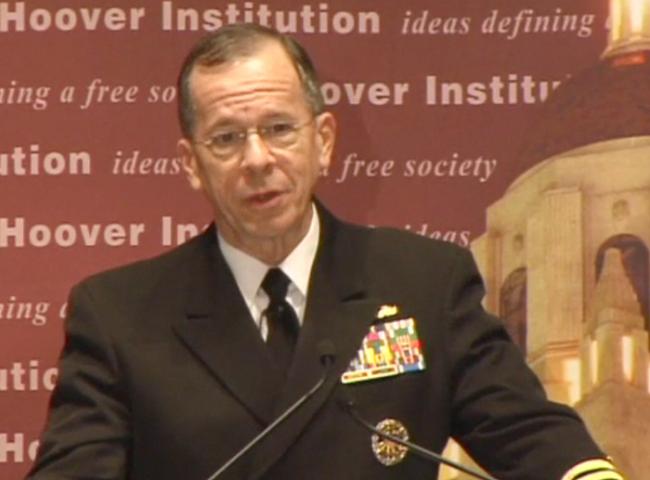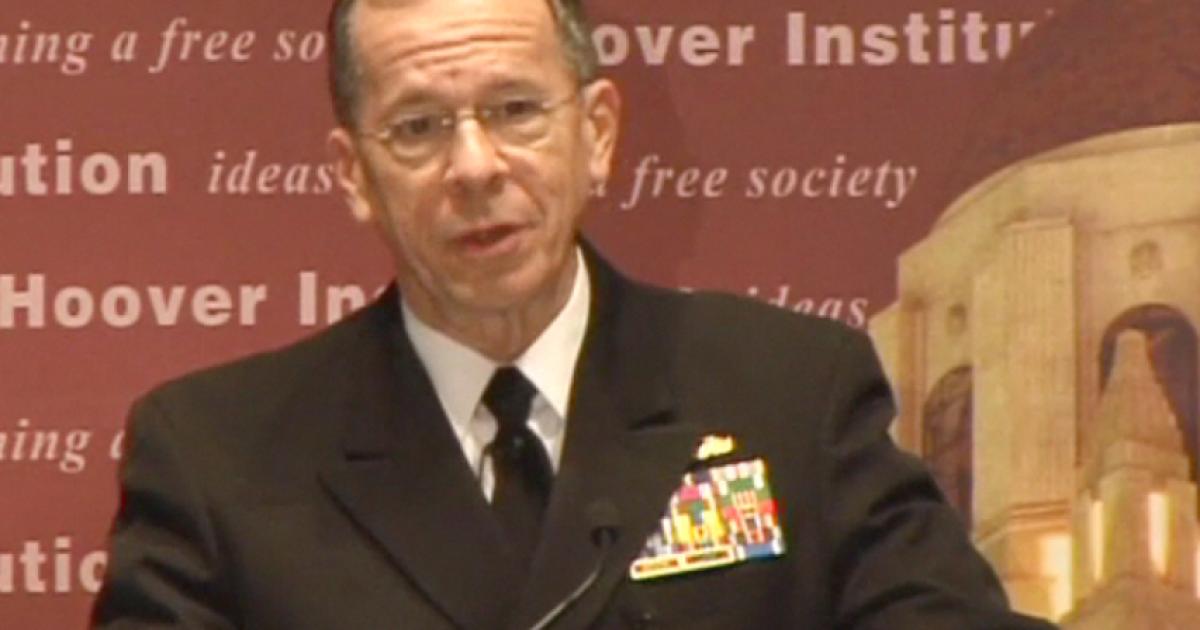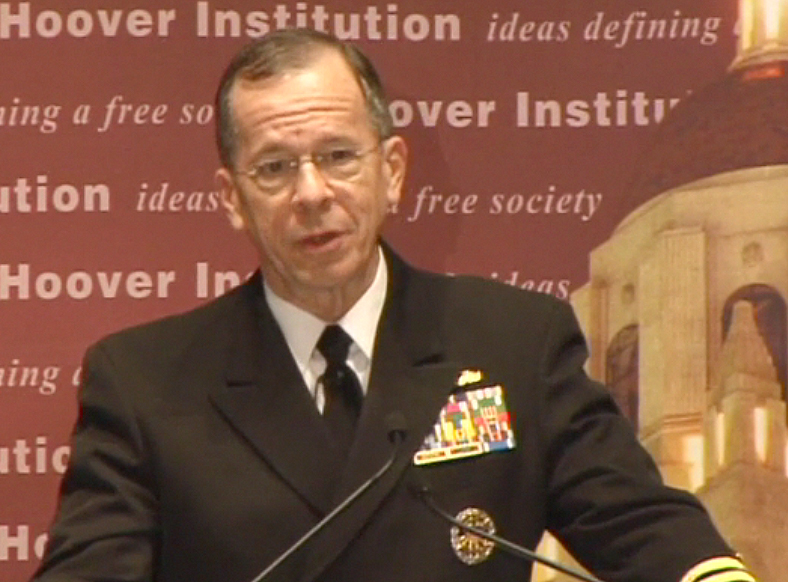
STANFORD—“We have to rethink the nuclear principles on which we’ve been operating,” said Henry Kissinger, former U.S. secretary of state, who spoke at a dinner on Thursday, November 11, in connection with a Hoover conference on nuclear nonproliferation titled “Deterrence: Its Past and Future.” Kissinger added that it’s necessary to keep in mind the essential role that the United States has played in maintaining stability in the world and preventing it from becoming chaotic or turning it over to the most ruthless.
In his remarks, Kissinger also reviewed the bilateral relationship of the United States’ and Soviet Union’s nuclear programs and the increasingly complicated nature of nuclear deterrence, with other countries’ developing separate nuclear programs. He also raised what he called the overarching question: What should established nuclear countries do if nuclear weapons are used?
Former U.S. secretary of state George P. Shultz, the Thomas W. and Susan B. Ford Distinguished Fellow at the Hoover Institution, introduced Kissinger and moderated the discussion following Kissinger’s speech. Sam Nunn, former U.S. senator, and John Raisian, the Tad and Dianne Taube Director at the Hoover Institution, made welcoming remarks at the dinner.
In January 2007, Kissinger joined Shultz and William Perry, former U.S. secretary of defense and Hoover senior fellow, and Sam Nunn in writing a Wall Street Journal op-ed titled “A World Free of Nuclear Weapons.” In it, the call for a drawdown on nuclear weapons by the well-known defense hawks—from different administrations and different political parties—invigorated discussions on the matter.
The op-ed, the first of three on the subject by the same, which also ran in the Wall Street Journal, followed a conference in October 2006 at the Hoover Institution marking the twentieth anniversary of the Reykjavik summit between U.S. president Ronald Reagan and Soviet Union general secretary Mikhail Gorbachev. At the summit, the two world leaders discussed the nuclear disarmament of their respective countries. Although no agreement on disarmament was reached, the far-reaching effects included the 1987 Intermediate-Range Nuclear Forces Treaty between the United States and the Soviet Union, the first treaty to reverse the arms race. In 1991, the United States and the Soviet Union developed the Strategic Arms Reduction Treaty (START I) aimed at cutting stockpiles of nuclear weapons.
At the 2006 conference, the participants debated the continued threat of nuclear weapons, identifying it as a matter of vital importance. Since that conference, the participants have continued to meet and write extensively on the subject. Presentations from the 2006 and 2007 conferences, Implications of the Reykjavik Summit on Its Twentieth Anniversary and Reykjavik Revisited: Steps Toward a World Free of Nuclear Weapons respectively, are available through the Hoover Institution Press. Other publications include A World Without Nuclear Weapons: End State Issues and Toward a Diplomatic Action Plan on Nuclear Issues (both Hoover Institution Press).
In 2010, a film, Nuclear Tipping Point featuring Shultz, Kissinger, Perry, and Nunn, was released to wide acclaim. In the film the four men share the experiences that led them to write the Wall Street Journal op-eds, which describe their efforts to reduce reliance on nuclear weapons, to prevent their spread into potentially dangerous hands, and ultimately to end them as a threat to the world. A special showing of the film, hosted by the four, was held on Friday, November 12. For more information about the event, see “Cold Warriors Keep Battling—against Nuclear Weapons” (Stanford Report, November 12).
Their efforts to focus attention on the threat of nuclear weapons have proven successful. In 2009, Shultz joined President Barack Obama at the United Nations where the president chaired a Security Council session that passed a resolution in favor of disarmament. Nuclear disarmament has become a centerpiece of American defense policy during the Obama administration; a new START treaty, signed in April of this year by Obama and Russian president Dmitry Medvedev, follows the earlier treaty that expired in December 2009.
In their op-eds, Shultz, Perry, Nunn and Kissinger wrote that “deterrence continues to be a relevant consideration for many states with regard to threats from other states. But reliance on nuclear weapons for this purpose is becoming increasingly hazardous and decreasingly effective.” The 2010 conference, then cosponsored by the Nuclear Threat Initiative, which began on November 11, brought together noted experts to address various aspects of deterrence:
“Remarkable progress has been made,” said Nunn, in his remarks at the conference luncheon on Friday, November 12. Among those successes, he pointed out that many nations have given up nuclear weapons, that there are reduced numbers of nuclear weapons, that new programs are in place to monitor nuclear armament, and that a new arms treaty has been signed by the U.S. and Russian presidents.
In his remarks at the luncheon, Admiral Mike Mullen, chairman of the Joint Chiefs of Staff, called deterrence a “critical subject.” For Mullen’s complete remarks, go to http://www.youtube.com/watch?v=JMpmh_-bwDM to view a video; for a transcript of the speech go to http://www.jcs.mil/speech.aspx?id=1491. Other speakers and their topics at the conference included
- Patrick Morgan, University of California, Irvine, and George Quester, University of Maryland, “How History and the Geopolitical Context Shape Deterrence”
- Edward Ifft, Georgetown University and Hoover Institution, “Practical Considerations Related to Verification and Compliance”
- David Holloway, Stanford University, Center for International Security and Cooperation, and Harald Mueller, Peace Research Institute, Frankfurt, Germany (who joined the conference by videoconference from Stanford in Berlin), “International Systems of Governance and Their Potential to Affect the Nature of Deterrence”
- James Goodby, Hoover Institution, and Michael Mazarr, National War College, “Redefining the Role of Deterrence”
- Christopher Ford, Hudson Institute, “Extending Time for Decision Making”
- James Acton, Carnegie Endowment, Edward Ifft, Georgetown University and Hoover Institution, and John McLaughlin, Johns Hopkins University, “The Interaction between Arms Control and the Theory and Practice of Deterrence”
- Sidney Drell, Hoover Institution, and Raymond Jeanloz, University of California, Berkeley, “Nuclear Deterrence in a World without Nuclear Weapons”
- Steve Adreasen, Nuclear Threat Initiative, and Michael Gerson, Center for Naval Analyses, “Deterrence through the Eyes of Other Nations”







